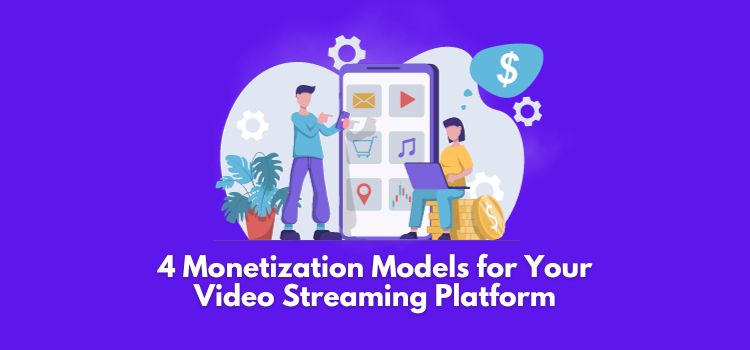Generating revenue is the primary goal of any OTT business and video content provider. The more money they make, the more high-quality content they can produce. Also, they can acquire better software for delivering videos to end-users.

There are multiple monetization models that can help a provider capitalize on content production and delivery. Some platforms support all common models: HVOD, SVOD, TVOD, and AVOD monetization. And some solutions offer a limited number of them. A content provider needs to understand which pricing model is suitable for them.
Let’s explore the widespread revenue-generating approaches.
Monetization Models for a Video Streaming Platform
#1. AVOD – Advertising-based Video-on-Demand
AVOD platform is usually free of charge for viewers. They watch ad commercials during playback instead. How do providers generate revenue, then?
The advertising-based monetization model is a win-win for all parties involved. Viewers watch content for free, advertisers reach their target audiences via ads placed on video platforms, and content providers generate revenue by running ad commercials.
Advertising on online streaming services can be effective because of accurate targeting functionality. Instead of showing ads to all viewers in a row, they tailor commercials to viewers’ demographics and interests.
#2. SVOD – Subscription-based Video-on-Demand
SVOD streaming platforms are popular among viewers and businesses. In this case, consumers pay a recurring fee for access to a content library. The fee can be charged monthly or yearly.
The subscription-based monetization model is convenient to customers as it allows them to watch as many videos as they want for a small fee. Such a pricing approach also doesn’t require signing a contract for viewers. They can cancel the subscription at any time.
Subscription-supported services usually cost less than traditional cable or satellite television. For this reason, people don’t limit themselves to one subscription. They tend to purchase 3-4 simultaneously, which allows them to have a wider choice of content.
#3. TVOD – Transactional-based Video-on-Demand
Compared to SVOD services, TVOD platforms require payment for every piece of content available. Customers choose such services when they don’t want to get involved in subscriptions but want to watch a particular video.
Providers of TVOD services can allow viewers to rent or download a video. They set a time when video is available for a viewer’s access.
Transactional-based monetization model is often used in combination with other monetization models, creating a hybrid approach.
#4. Hybrid Monetization Model
A hybrid monetization model is a combination of several revenue-generating approaches. Providers mix several models to diversify their revenue streams and offer multiple payment options for viewers.
A popular combination in the market is SVOD and AVOD. Platforms allow viewers to choose between two packages: one is an ad-supported subscription at a lower price, and the other one is an ad-free subscription at a higher price.
TVOD monetization model is usually used in combination with SVOD. With TVOD, providers offer access to Premium content, having two groups of videos: content available on a subscription, and videos that require additional payment for access.
Final Thoughts
Choosing a monetization model is critical when launching or running a video streaming business. It will define how revenue comes to a provider and how viewers can access your content library.
However, the choice of monetization models depends on the OTT solution you utilize to control and manage your streaming platform. Make sure you select the one that suits your business interests, needs, and goals.